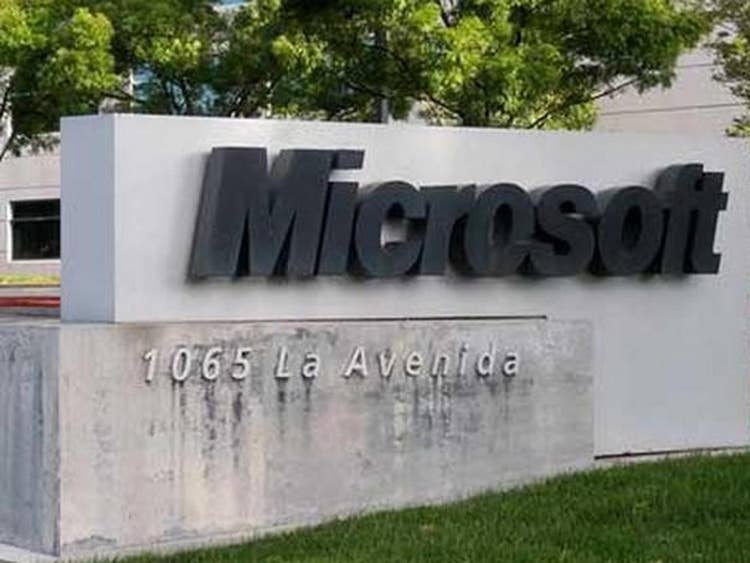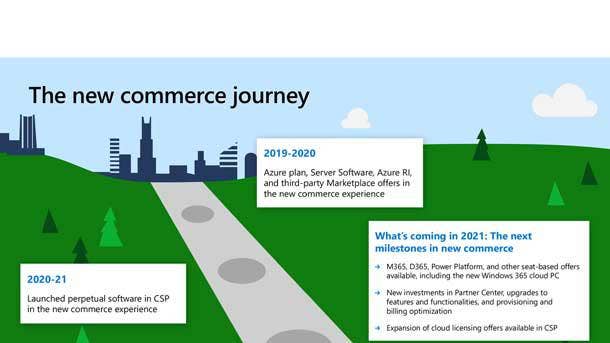5 Major Microsoft Partner Program Changes In 2022
Partners have been hit with New Commerce Experience, a month-to-month premium, Microsoft Cloud Partner Program and new partner capabilities scores.

Microsoft has announced widespread changes to its 400,000-member partner program, hitting on everything from technical capabilities and partner incentives to business policies.
After announcing a price increase across Microsoft products in the Microsoft 365 portfolio – including popular applications such as Word, Teams, Excel and SharePoint – Microsoft stunned partner businesses of varying sizes and specialties with a premium on month-to-month commitments and a new partner scoring system that replaces the legacy Gold and Silver designations.
The backlash has included at least two Change.org petitions admonishing Microsoft for the changes, the first receiving more than 2,000 signatures and the second receiving more than 500.
[RELATED: Channel Chief Rodney Clark Defends Microsoft 365 Licensing Model]
Microsoft Channel Chief Rodney Clark has acknowledged the effect of so much change on Microsoft partners while defending the program changes as necessary to meet customer buying preferences and demands.
“While we‘ve been excited about New Commerce, we also acknowledge that this has been a pretty significant undertaking for our partners,” Clark previously told CRN. “We get this feedback all the time.”
He continued: “While change is tough—we acknowledged that earlier with some things that we put in place—as a partner in the ecosystem, we always have to be open and look for ways to create more value for our customers and then, ultimately, how our partners can deliver on that value.”
CRN has been reporting on the partner program changes rolled out under the New Commerce Experience (NCE) and Microsoft Cloud Partner Program (MCPP) banners since the start.
Click through the slideshow to see some of the major changes Microsoft has been announcing for 2022 and deadlines you need to know.

Overall Price Increase
In the background of Microsoft’s partner program changes is the first substantive pricing update of Microsoft 365 and Office 365 since the debut of the cloud-based productivity and collaboration applications in 2011.
The increase – originally slated for March 1 but moved to mid-March to give partners more time for the adjustment – came after 10 years of added capabilities in areas including communication, security, compliance and automation.
Partners were more understanding of the overall price increase to Microsoft’s cloud-based product suite, not separating the pricing structure of month-to-month and annual commitments.
M365 Business Basic increased by $1, from $5 to $6 per user per month, according to the company. M365 Business Premium increased by $2, from $20 to $22. Office 365 (O365) E1 increased $2, from $8 to $10. O365 E3 increased by $3, from $20 to $23. O365 E5 increased $3, from $35 to $38. And M365 E3 increases $4 from $32 to $36.
In 10 years, the 365 product had grown to 300 million commercial paid seats, according to the company. Microsoft introduced O365 in 2011 and introduced M365 in 2017, bringing together Office, Windows, enterprise mobility and security. The tech giant also launched the popular Teams collaboration application the same year.
The price increase came as cloud products helped push Microsoft into higher earnings records. In the company’s latest quarterly earnings, it reported $51.7 billion in revenue for the second fiscal quarter, which ended on Dec. 31. That revenue is a 20 percent increase year over year.
Microsoft Cloud revenue reached $22.1 billion for the quarter, up 32 percent year over year.
Productivity and business processes reached $15.9 billion, a 19 percent increase. This segment includes Office Commercial products and cloud services, which saw revenue increase 14 percent.
Office 365 revenue increased 19 percent, driven by growth in small and midsize businesses and frontline worker offerings. Microsoft 365 subscriptions grew 19 percent to 56.4 million. LinkedIn revenue grew 37 percent.
The intelligent cloud segment reached $18.3 billion for the quarter, up 26 percent year over year. Server products and cloud services revenue increased 29 percent. Azure and other cloud services revenue grew 46 percent.
Microsoft has also been on an acquisition spree. Recently announced acquisitions include AT&T’s Network Cloud, voice recognition company Nuance, data analysis company Suplari, video streaming company Peer5, security and privileges company CloudKnox, internet of things security startup ReFirm Labs and attack surface management firm RiskIQ.
Microsoft was reportedly in the running to buy threat intelligence company Mandiant.

New Commerce Experience
In January, Microsoft began to roll out the New Commerce Experience (NCE) for seat-based offers for Microsoft 365, Dynamics 365, Power Platform and Windows 365 in the Cloud Solution Provider program.
In March, NCE became the only way to transact new business. By July 1, renewal subscriptions must be bought through NCE. And in July 2023, all remaining subscriptions on CSP legacy must be moved to NCE.
On one hand, NCE aimed to simplify how partners and customers buy from Microsoft. Rodney Clark, the company’s channel chief, told CRN recently that the NCE platform reduces the number of software licensing go-to-market models from 20 to just three and sets the stage for a new era of simpler software licensing for Microsoft customers and partners.
The three new go-to-market models are: a breadth motion that includes CSP partners, an enterprise motion and a self-service motion. That’s a more streamlined experience for customers than the 20-plus ways customers previously purchased, through programs including CSP, Open License, Select Plus and directly online, Clark said.
“Regardless of where a customer is, whether or not they‘re purchasing a large enterprise agreement or going through CSP or they are going into self-service mode, they have one common platform and experience,” he said. “And that is what customers are asking for. And the thing that’s interesting in that statement is it‘s an efficiency statement for both our customers and our partners.”
For partners, the NCE platform provides big changes that streamline licensing through a dashboard, including the ability to schedule seat counts and log automatic term renewals, Clark said.
“Allowing a partner to schedule seat counts, to do SKU conversions, to manage subscriptions automatically and assign seats automatically through a dashboard is hugely efficient for our partners,” he said.
Clark delayed the start of the roll from October to January to give partners more time to adapt to the changes.
“During that time … we supported our partner ramp with additional resource, technical resource as well as modeling on their business model so that we can, in essence, be ready for where we are now,” Clark said.
The changes under NCE have been so onerous for some partners that they’ve come to rely on training and help provided by distributors such as AppRiver, Ingram Micro, TD Synnex and Pax8.
At least one partner has given up direct Cloud Solution Provider access to Microsoft to work more closely with his distributor and save himself some headaches from the partner program changes, the partner told CRN in an interview.

Month-To-Month Premium
One of the least popular parts of New Commerce Experience is a 20 percent fee on monthly subscriptions to popular Microsoft products. This premium is on top of the overall price increase that started in March.
A Microsoft discount has allowed partners and customers to prevent the 20 percent monthly premium pricing through June.
Although in the past the month-to-month and annual pricing of popular cloud-based Microsoft products has been about the same, Microsoft Channel Chief Rodney Clark has stood by the decision for a monthly premium.
“When you look at subscription models in general, there is a premium for a monthly term,” Clark told CRN recently. “And then there’s typically some type of value in going to an extended annual term. And in this case, we’ve built that into our model, and we’re also aligning to other models that are in the market. You sign up for any subscription today that is a cloud-based subscription, and you get that option. You can pay more monthly, or you can go to this annual term.”
Microsoft has “always had this notion of annual contracts,” Clark said. “But we didn’t necessarily enforce monthly interpretation of those annual agreements,” he said. “And so when you look at the business model today, it’s really no different than previous. A partner has to assess the creditworthiness of a customer. And based on that, if there is a customer that they deem as at risk, then there is a monthly option for that and they can go month to month.”
Clark elaborated on the monthly premium at CRN parent The Channel Company’s XChange 2022 event.
“The 20 percent is not meant to penalize anyone or to shift and change business models,” Clark told the audience. “The reality is that we had a program in CSP that actually created some unintended business models for us – and one of which was this notion of monthly.”
He continued: “Each of you as partners have to assess the risk of your customers. And that‘s for you to decide, as opposed to Microsoft or your indirect provider. If you assess the risk to be high, this is where our monthly agreement becomes the path.”
Clark also told the audience that Microsoft has an internal credit organization that can review situations when a partner is on the hook for a license.
“If there are circumstances that are – to a point – where that’s untenable, then we have a group within Microsoft that can review those situations in cases,” Clark said. “Now, it’s not intended to be every single one. But we do have a credit organization that can review those.”
He continued: “The credit organization is intended to work through scenarios to help balance the risk, if you will. So it‘s not an appeals process. It literally is a team of people that will assess what is the ultimate and overall business model. It’s been a group that we‘ve had in place for many, many years. And I think that given the change and shift, that it’s appropriate for us to talk about that being a resource that‘s available to you.”
Clark also recommended partners that work with distributors contact them with customer risk questions.

Microsoft Cloud Partner Program
While partners continue to wrap their heads around the changes under New Commerce Experience, in March Microsoft announced a slew of other partner program changes to add to the frustration.
Microsoft plans to rename internal use rights licenses (IURs) into “product benefits” and the Microsoft Partner Network will change its name to the “Microsoft Cloud Partner Program.”
“This announcement is about more than a name; this change better reflects the enormous and ongoing transition of business operations to the cloud, and how Microsoft intends to support partners in the future,” Clark said in a blog post from the time. “It aligns our partners’ go-to-market motions with the way customers buy today.”
The newly christened Microsoft Cloud Partner Program will have two qualifying levels, according to Clark’s post. “Solutions partners” meet specific requirements across a partner capability score for each service area. “Specializations” and “expert programs” give solutions partners ways to stand out from other organizations and demonstrate technical expertise.
The new program is focused on six service areas with Microsoft Cloud, three of which are baked into Microsoft’s Azure cloud offering. Those three are data and artificial intelligence; infrastructure and digital and application innovation.
The other three service areas are business applications, modern work and security.

Goodbye Gold And Silver, Hello Partner Capability Score
Perhaps the biggest announcement from the Microsoft Cloud Partner Program changes is a planned partner capability score (PCS) used to measure partner performance, skilling and customer success.
Microsoft will get rid of the Gold and Silver statuses partners currently use. Instead, partners will start at a base membership and qualify as “solutions providers” if they score 70 or more points according to a partner capabilities score (PCS), also rolled out as part of the Microsoft Cloud Partner Program changes.
“Prior to October,” according to Clark’s post, partners will see “no impact to partners’ business or program status — including anniversary dates — and no reduction in benefits” if they aren’t above a score of 70.
Microsoft will update its benefits program to include renewal of benefits partners are currently using while allowing new benefits packages customized to meet partners’ unique needs based on their business focus. Partners can keep using product benefits – the former IURs – including on-premises licenses, cloud service subscriptions and Azure credits.
No partner incentive eligibility will change in the 2023 investments and incentives program year, which runs from October 2022 to September 2023, according to Microsoft.